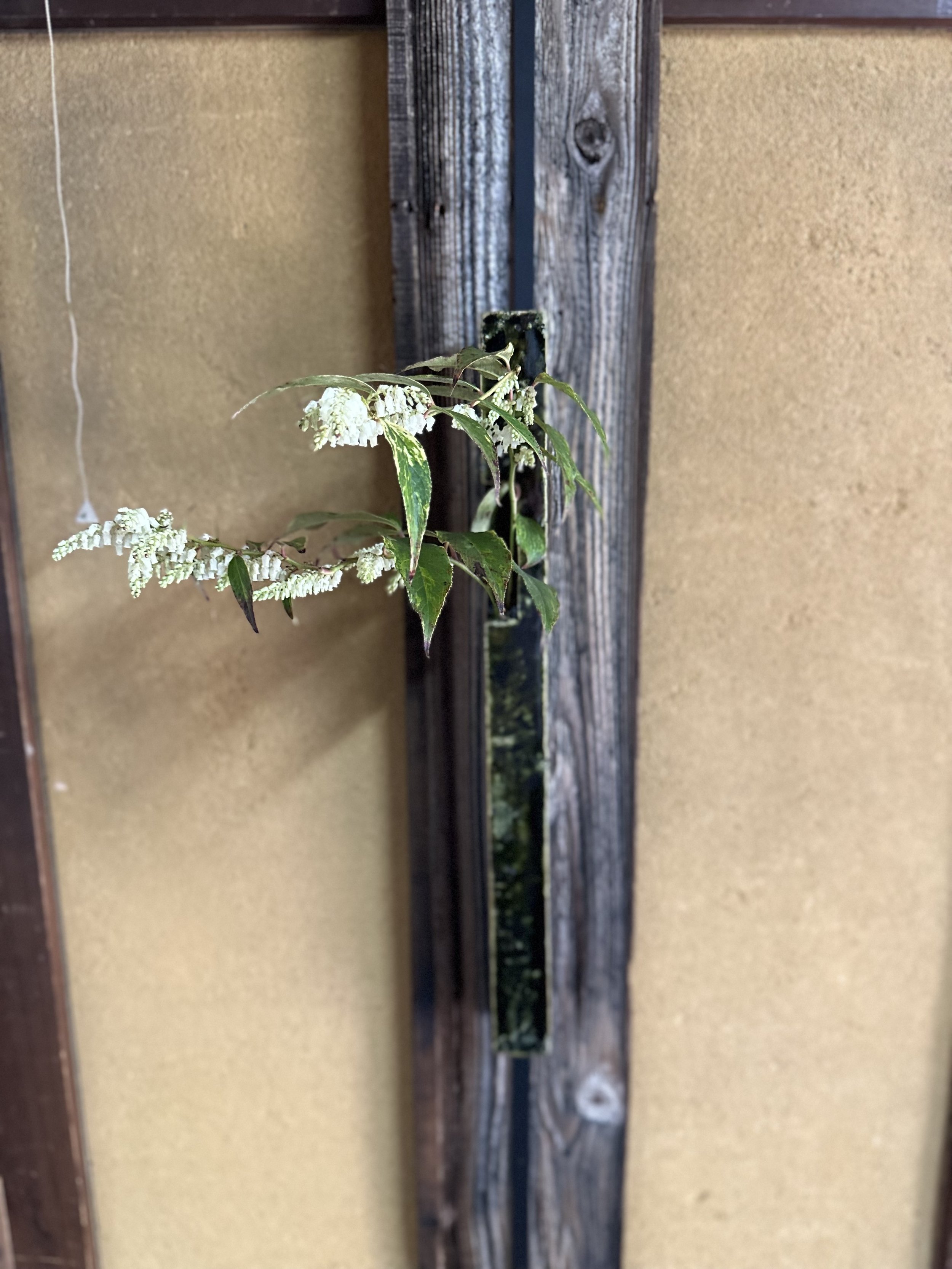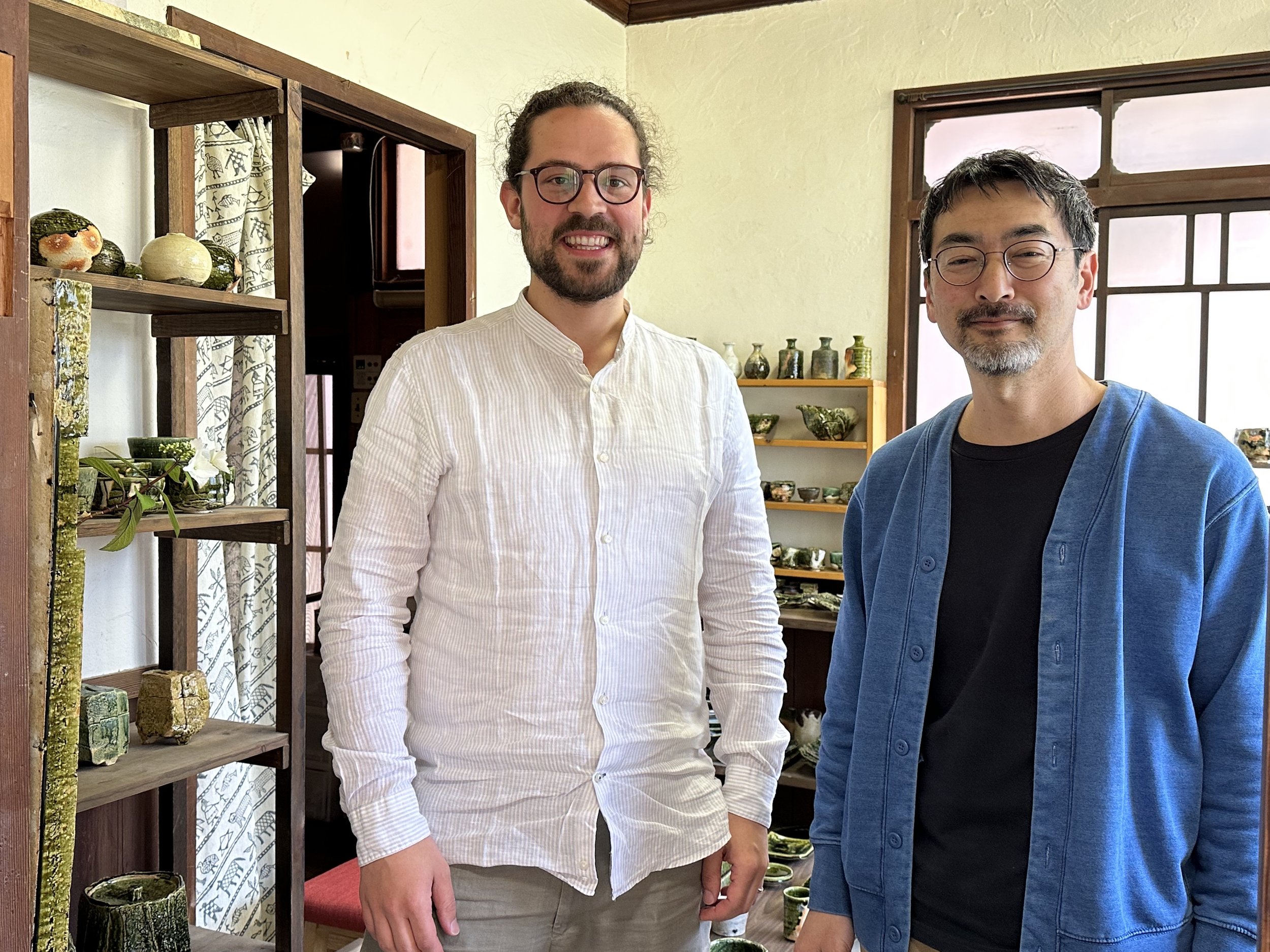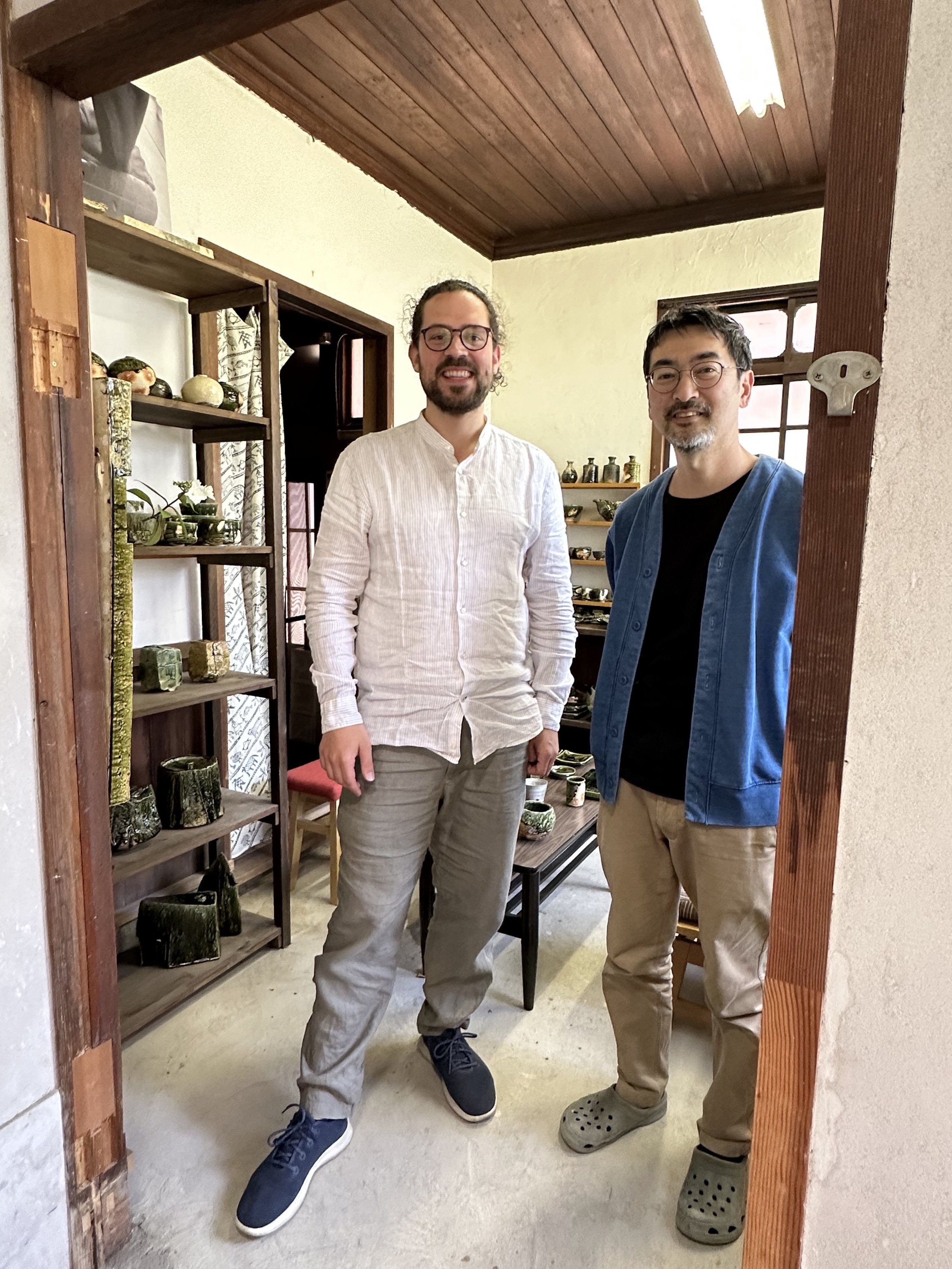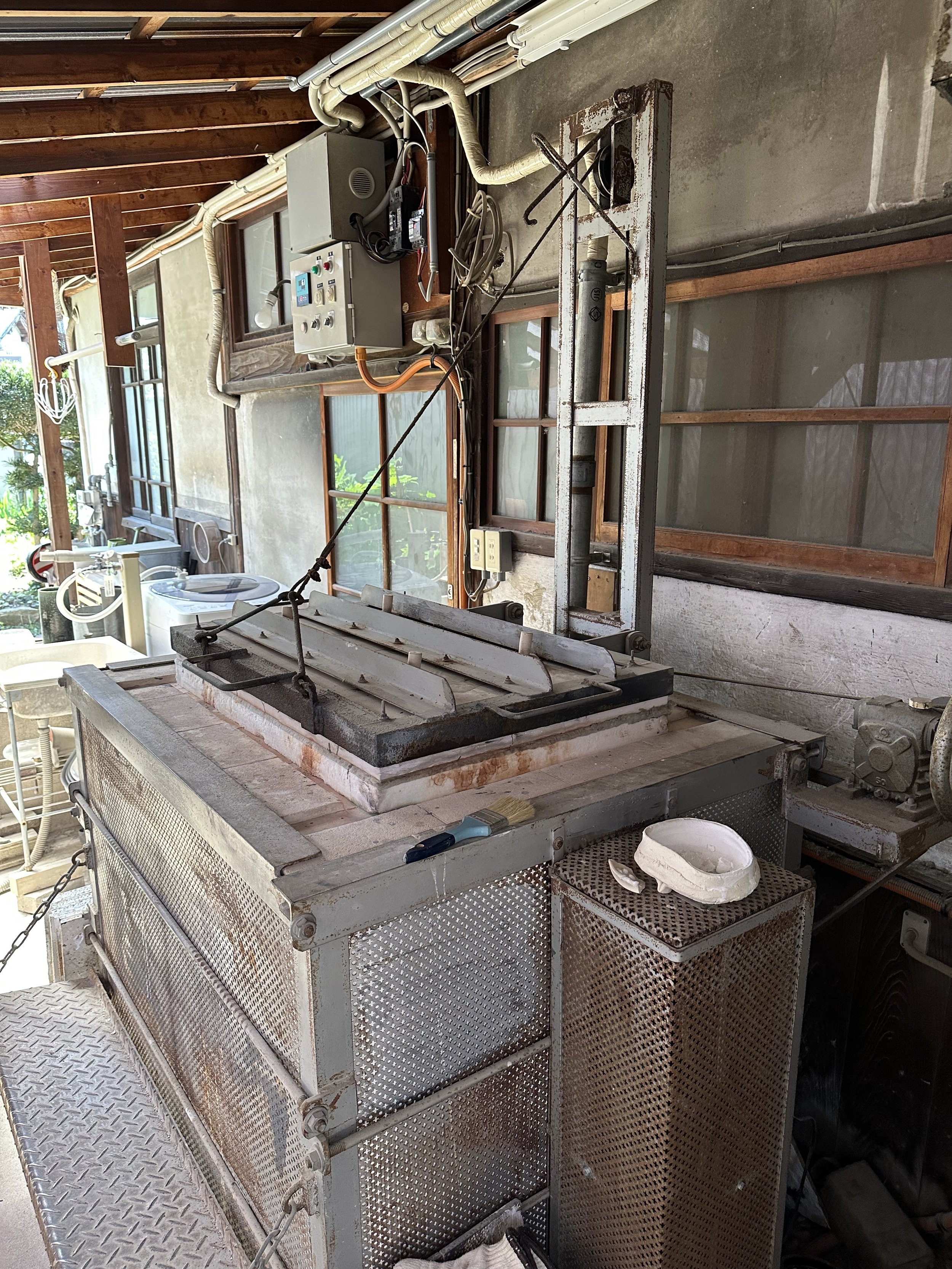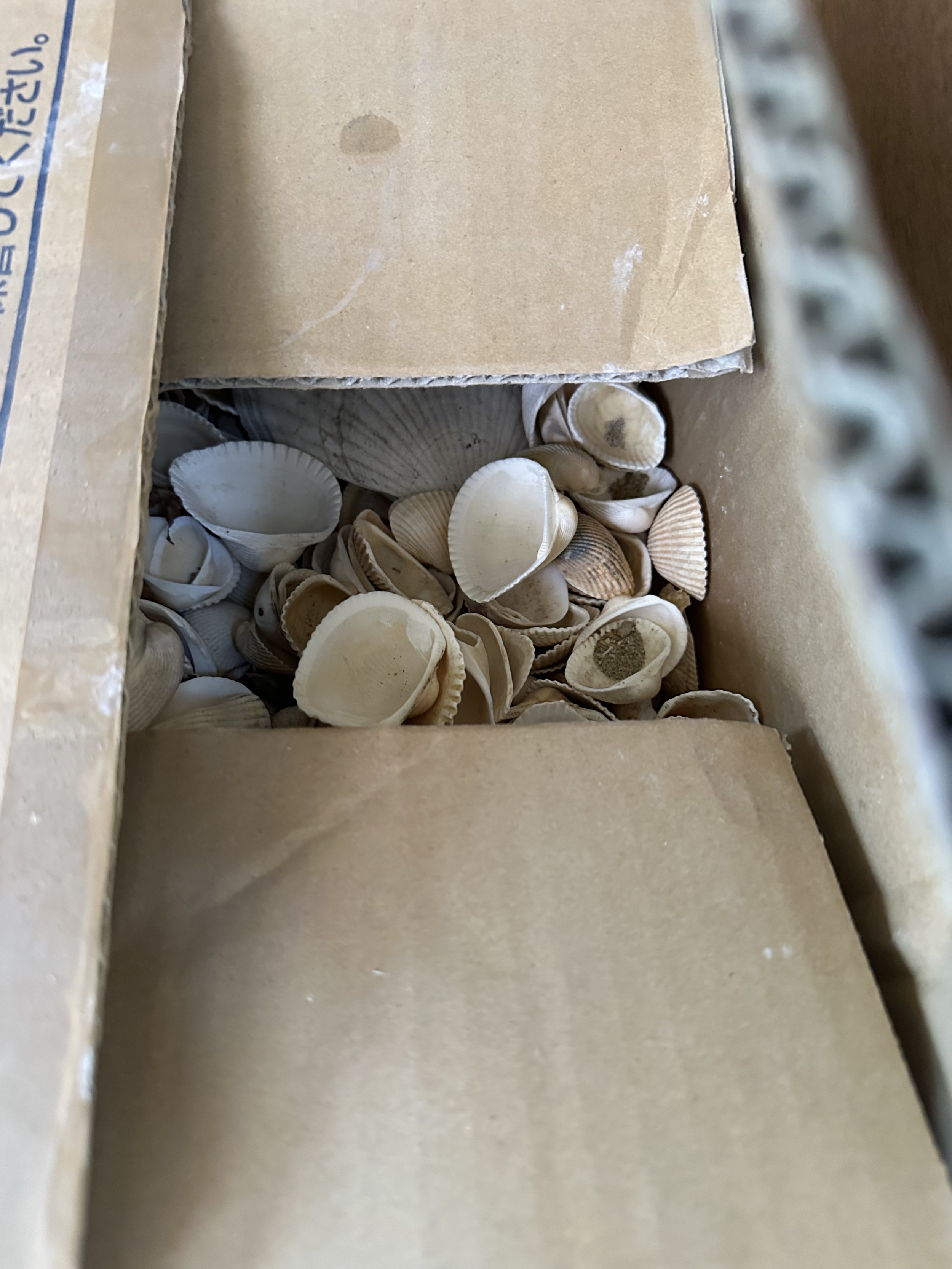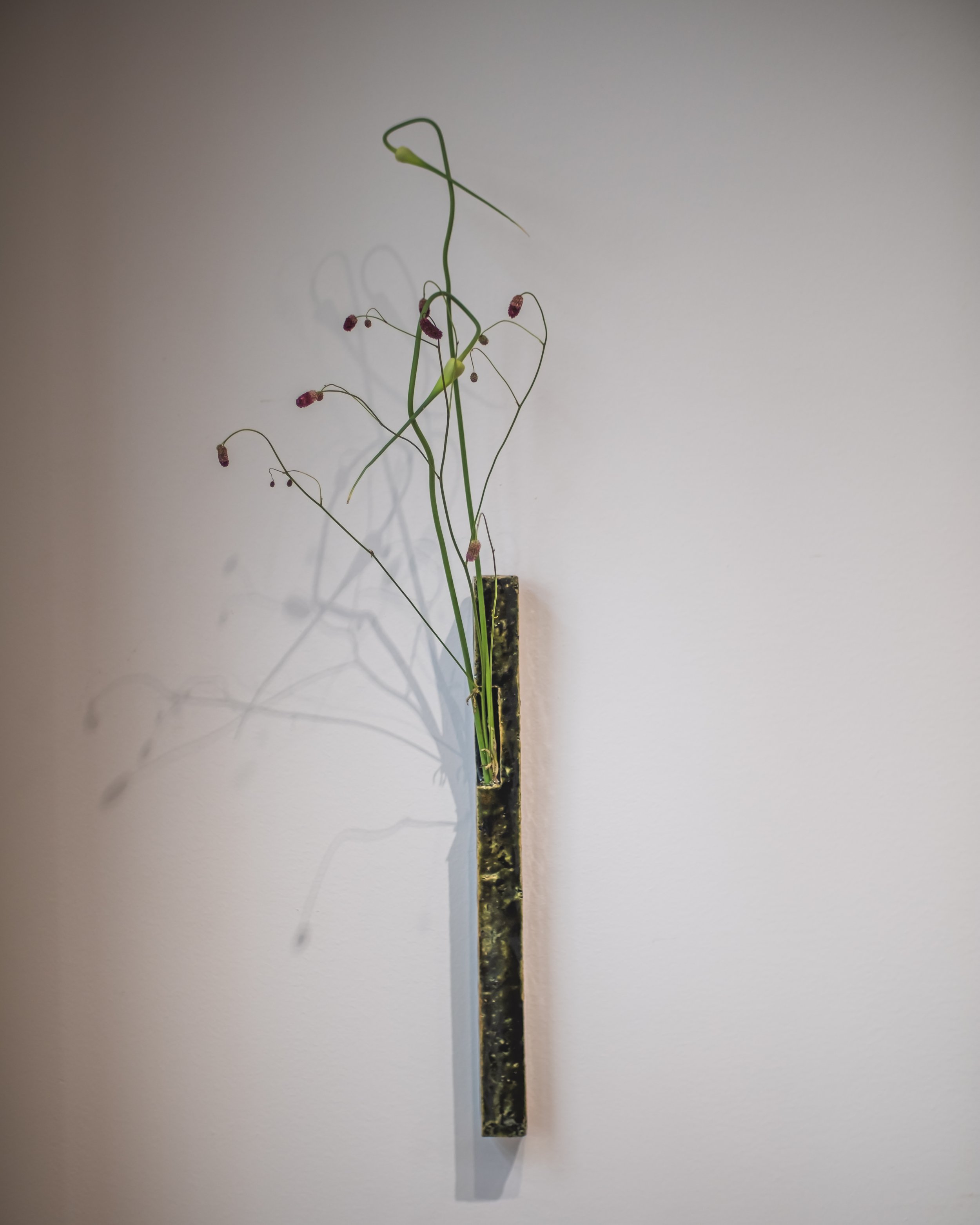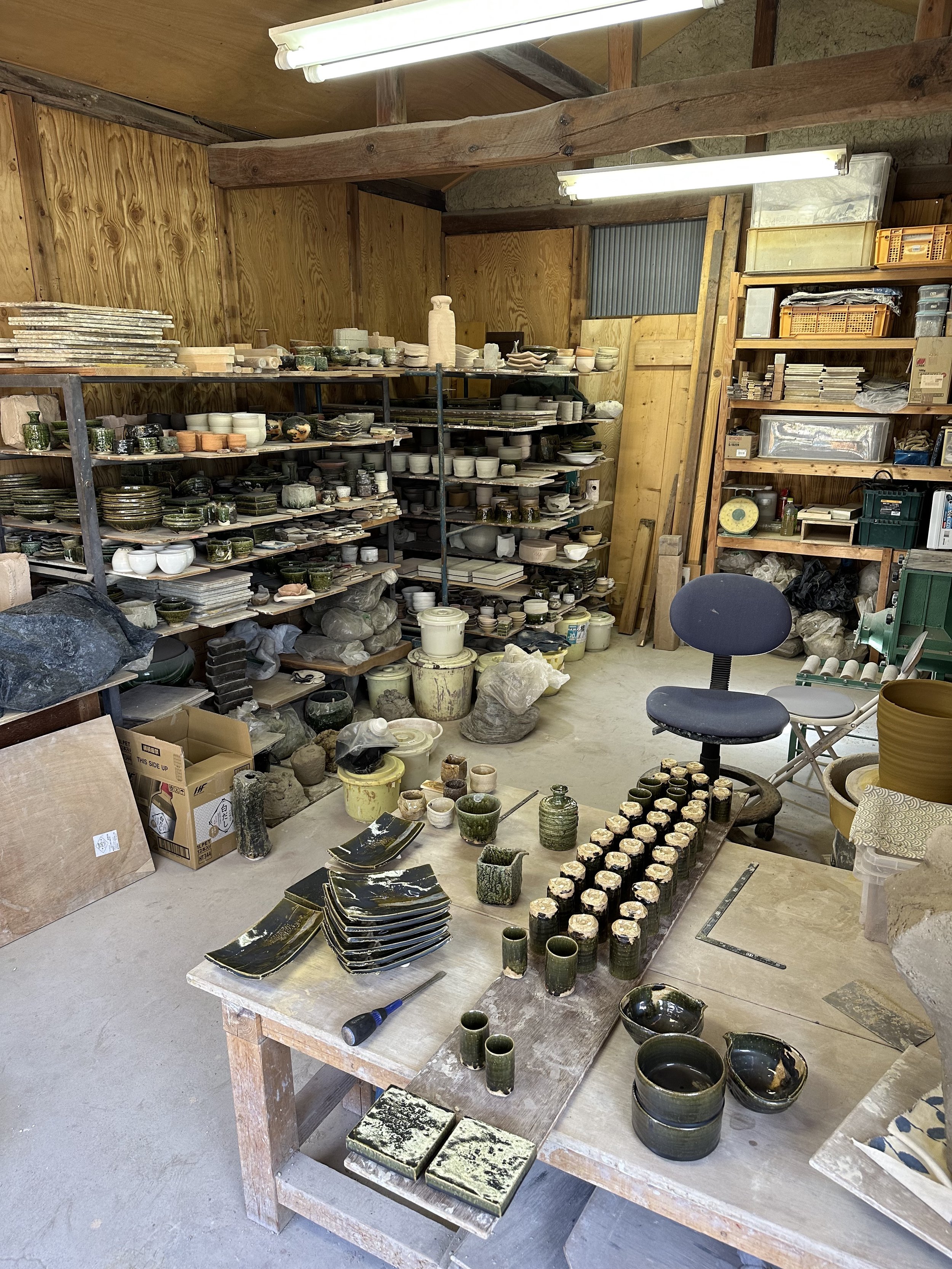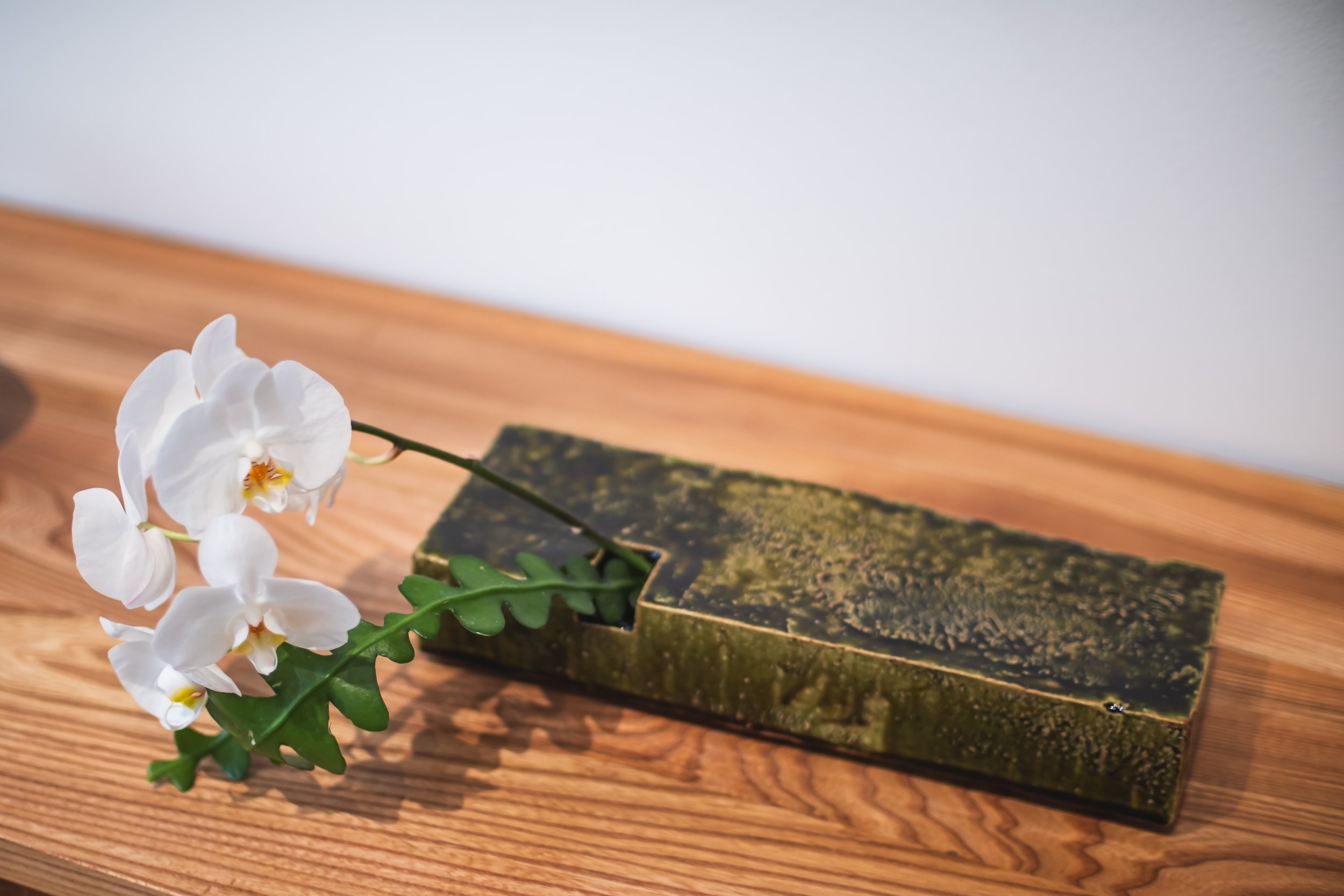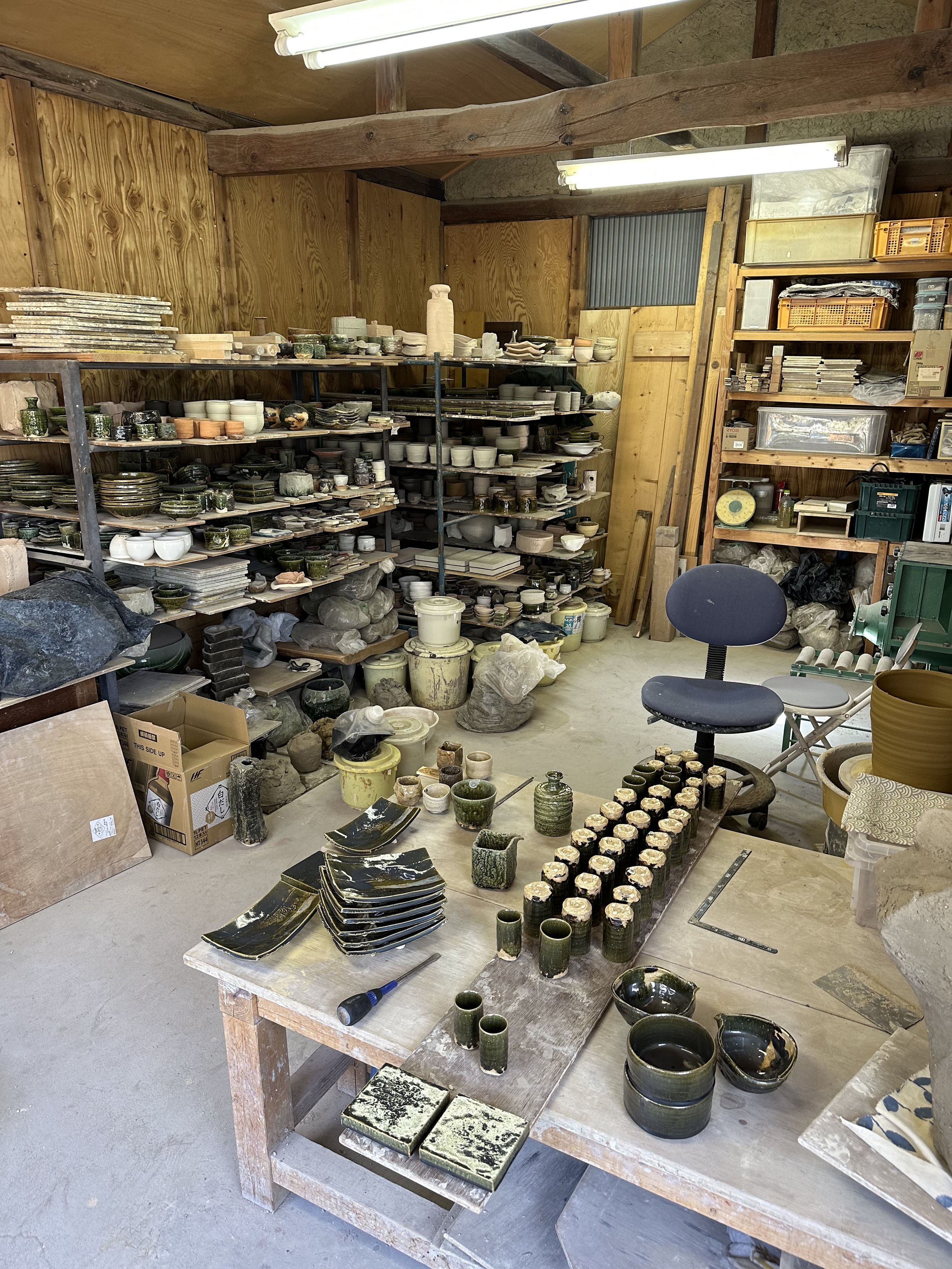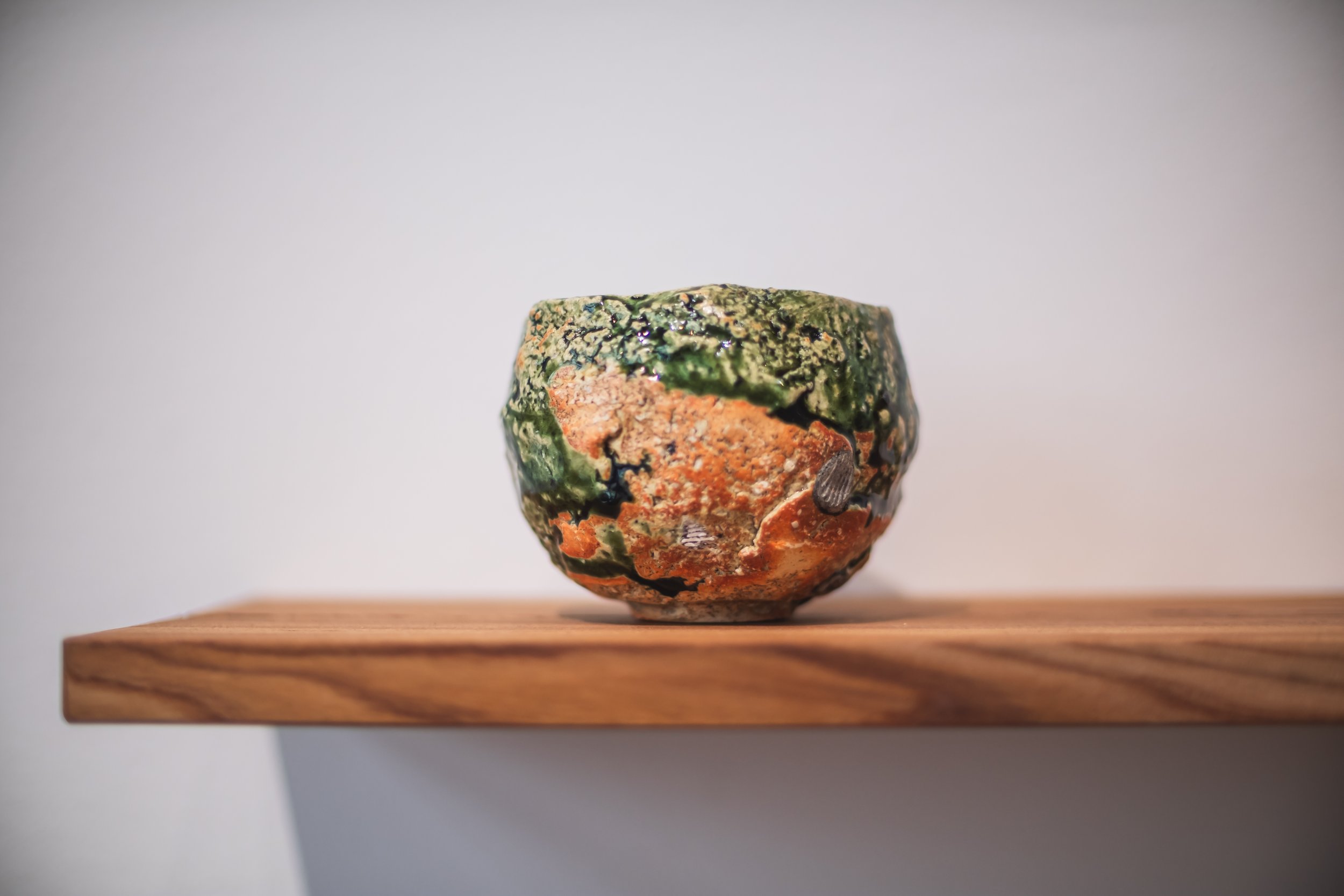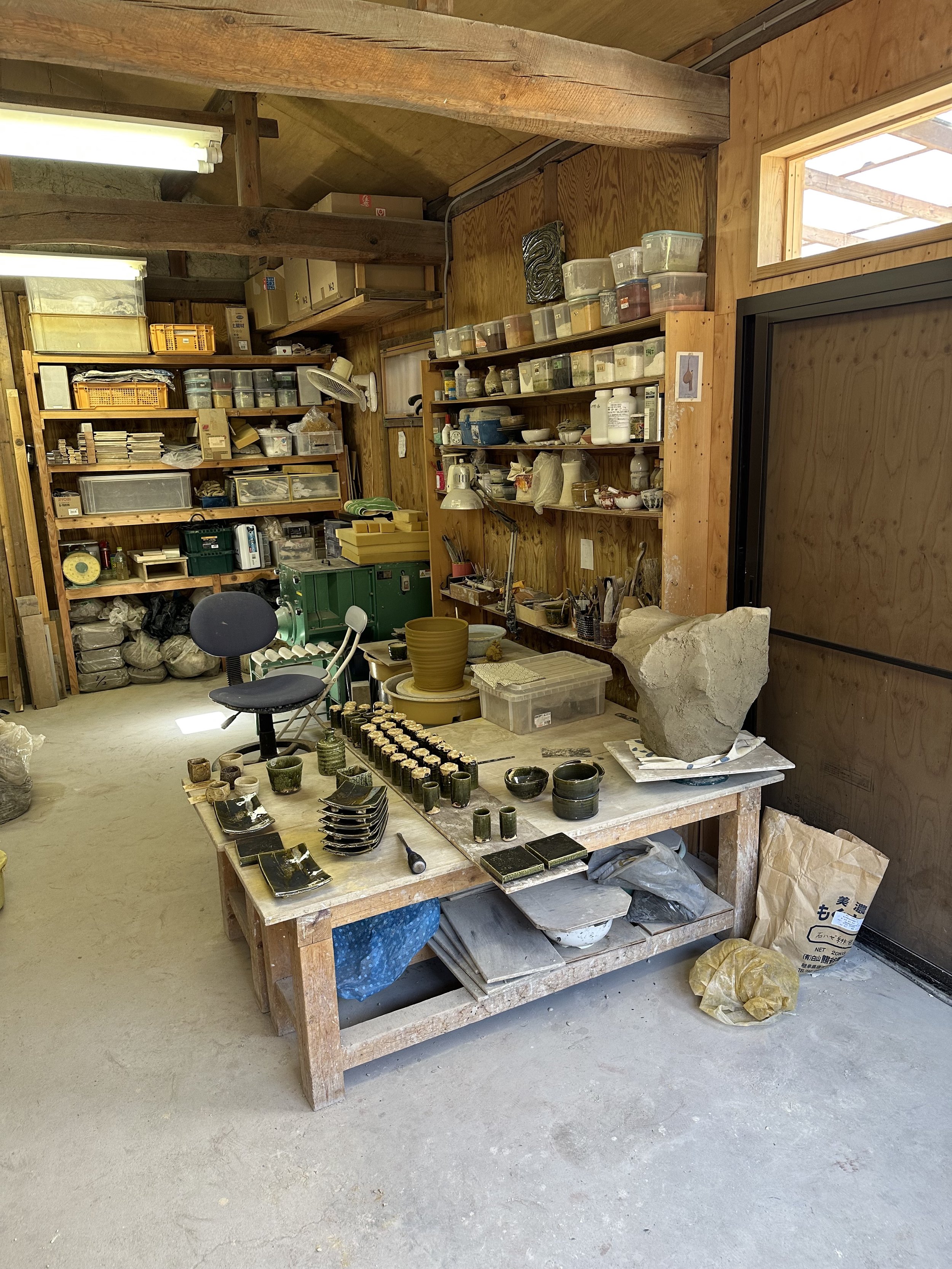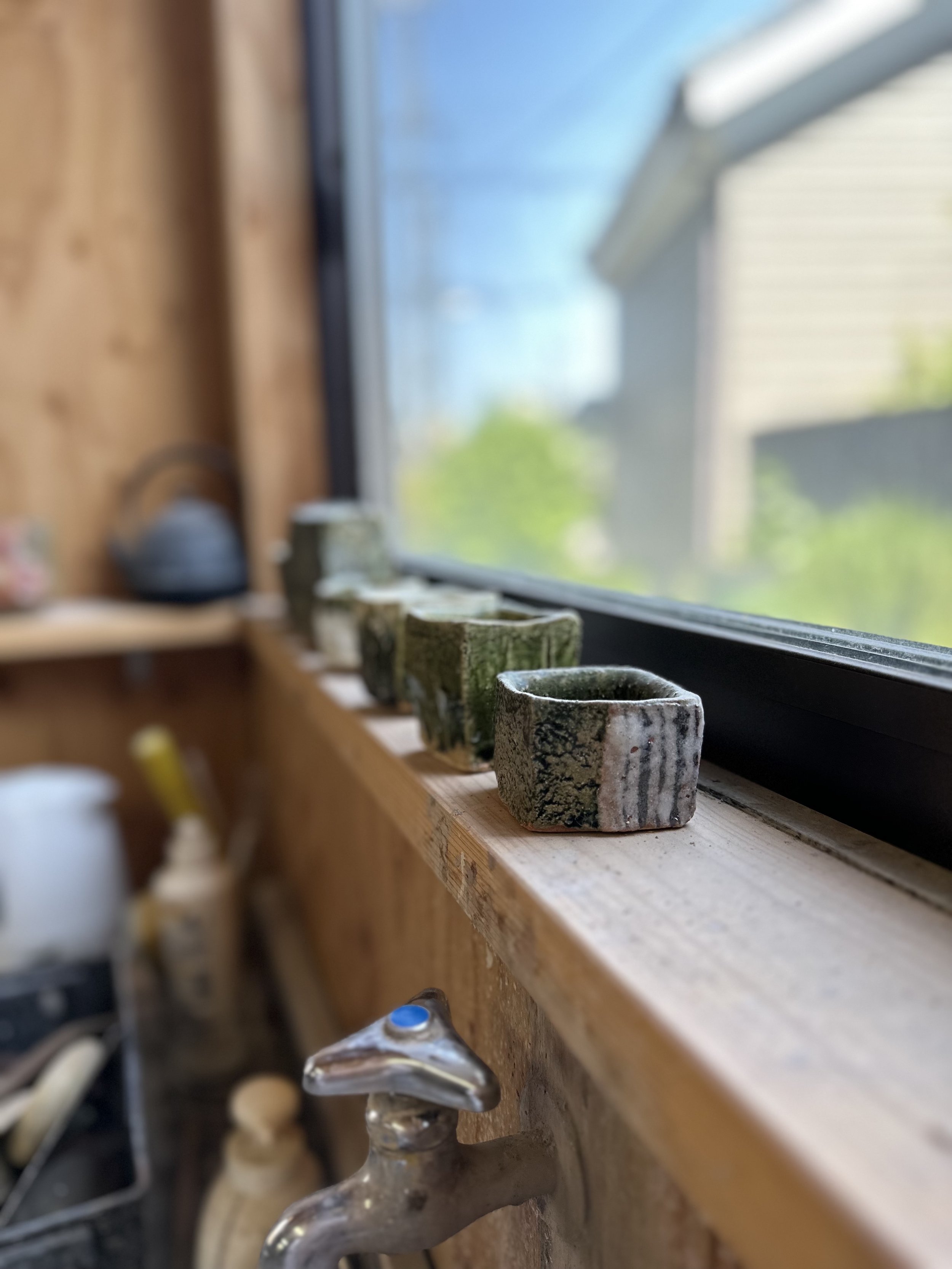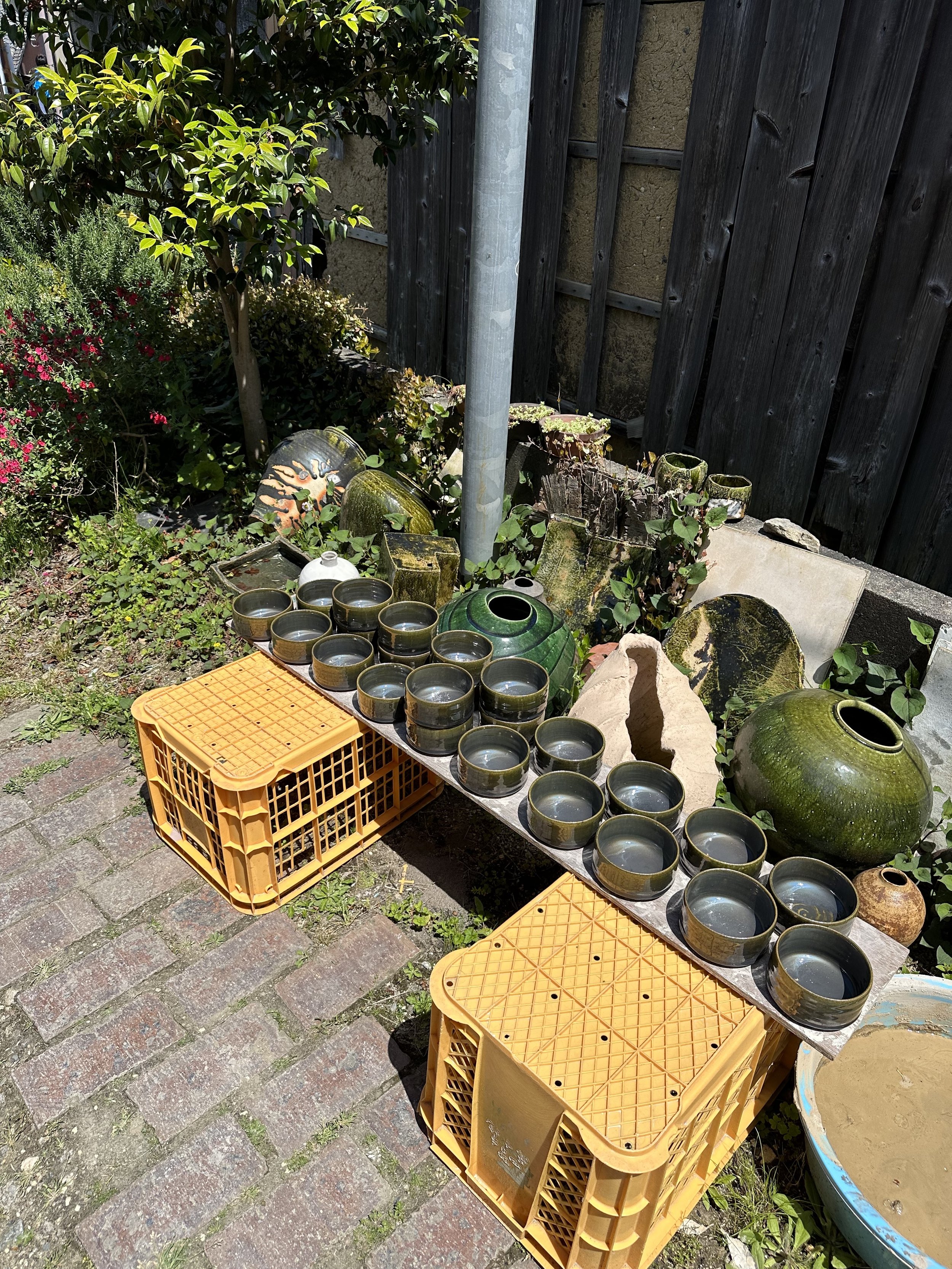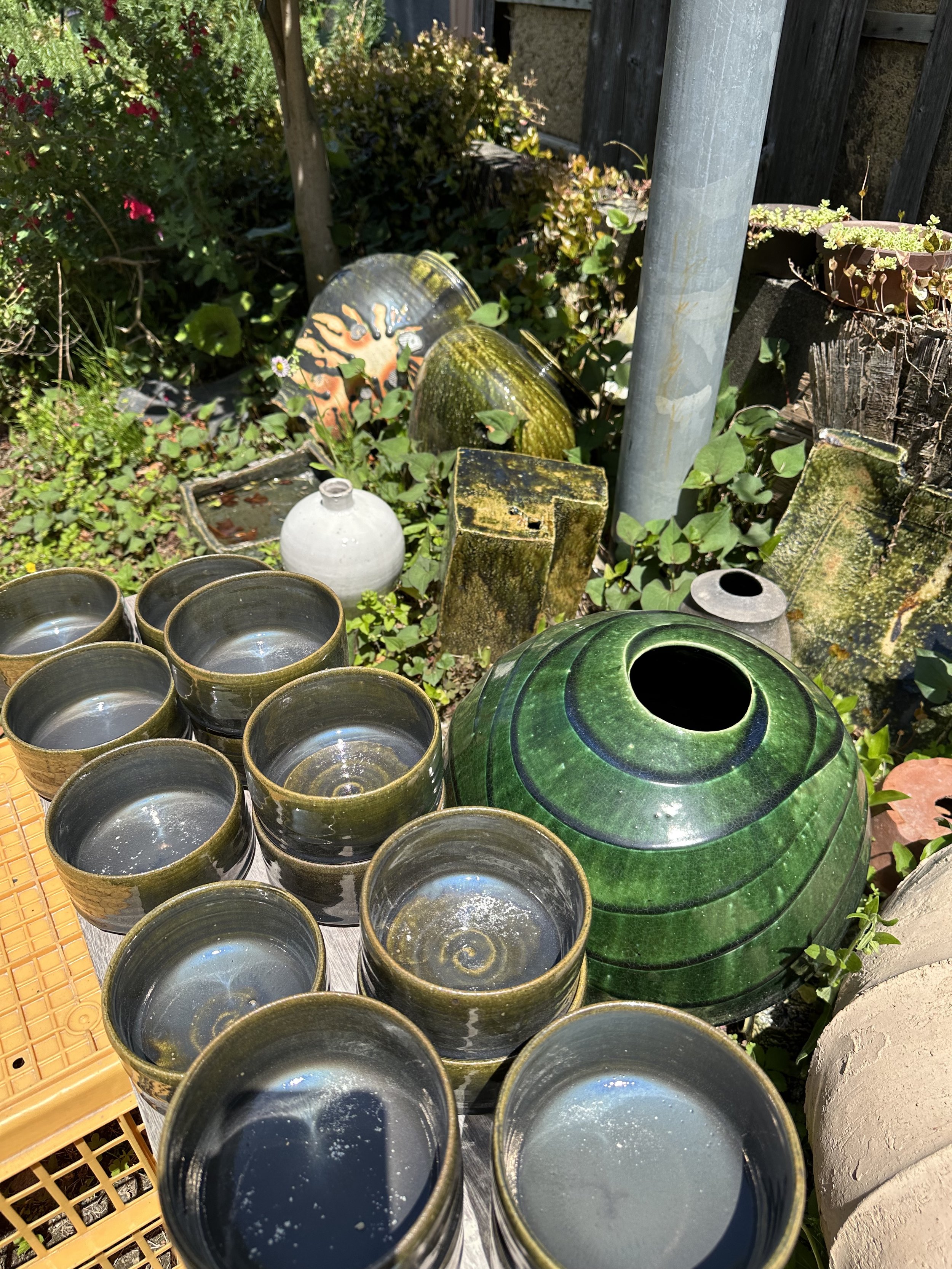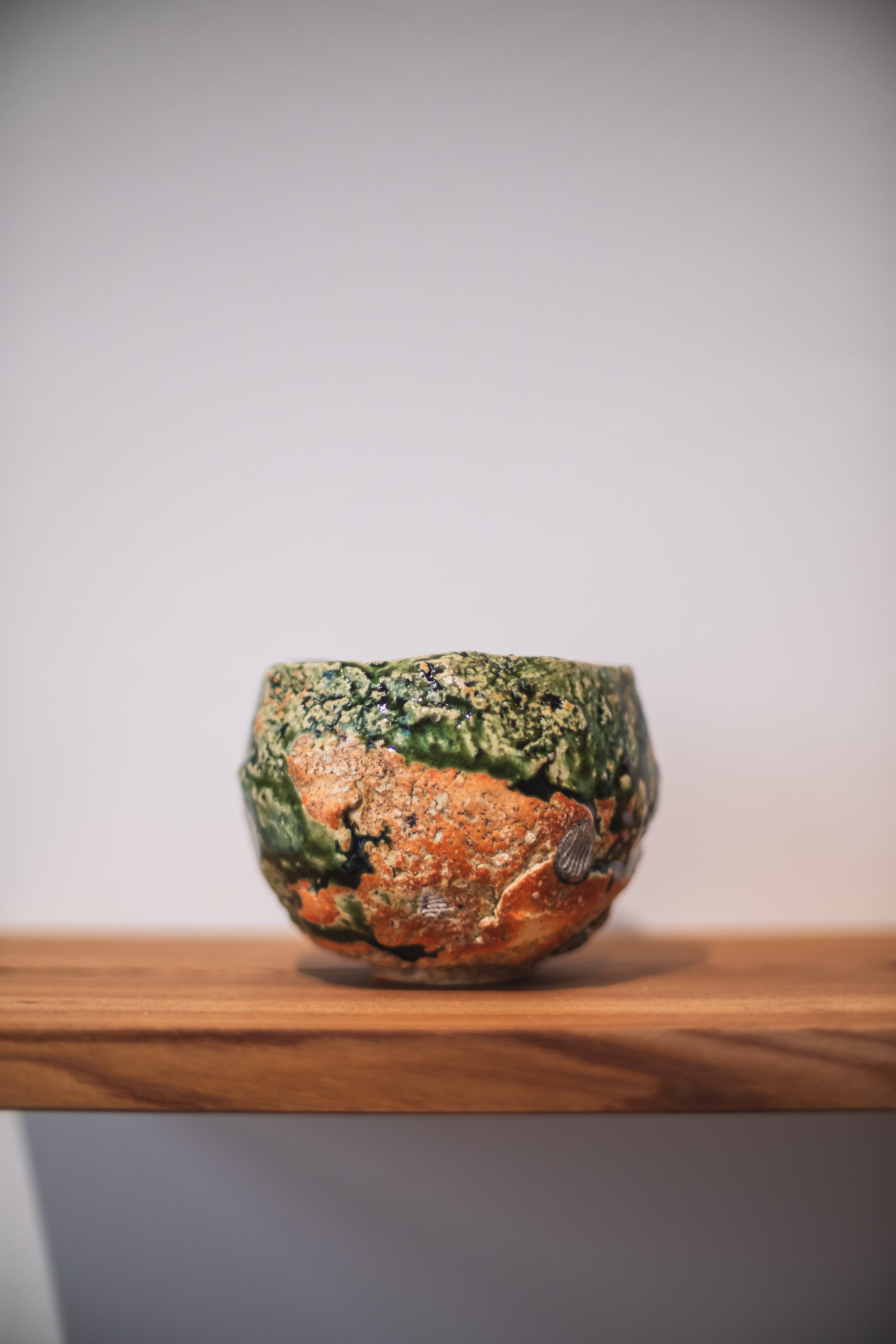When travelling Japan in April this year I was specifically searching for unique potters with a wide range of utilitarian as well tea ceremony items beyond teapots and gong-fu-cha ware. Being attracted by the complexity of classic Oribe style pottery for quite some time I made sure to make some research ahead of time. I was lucky that Takuya-san agreed to a personal visit in his home and studio in Nara, which is just an hour train ride from Kyoto, the center of tea ceremony.
Oribe ware
This style was supposedly invented around 1600 by Sen-no-Rikyu’s disciple Furuta Oribe, who was and still is one of the most influential tea masters of Japan. The Momoyama period and early Edo period came with improved firing technology, which enabled potters to develop and apply new styles and glazes.
The main characteristics of Oribe ware are rich color renderings (mostly green copper glazes) as well as uneven and deformed shapes. This unique aesthetics is sometimes combined with iron-oxide underglaze designs (patterns, drawings, ornaments). Besides several famous Oribe styles utilising copper-greens (e.g. Ao-Oribe, so-oribe and Narumi Oribe), there also exist less famous red and black Oribe glazes utilising various styles.
Takuya-San's works evoke a strong sense of wild nature in me. The different shades of green on toasty clay strongly resemble mossy rocks. Bigger works like vases resemble mossy waterfalls. The artist is using different thicknesses of glaze as well as differents levels of glossiness to create highly complex textures and surfaces. This sense of aesthetics seems to not only suit but also belong exclusively to Japan.
When visiting his home and studio in Nara I was not only introduced to all the steps of making, firing and post-processing these Oribe style pieces but was also greeted with enormous hospitality. Being served Matcha in one of Takuya-san’s Chawan I quickly fell in love with those thousand shades of green surrounding me. The structure of the hand-cut clay showing underneath a dark green curtain was offering a new surprise each time.
Takuya Kanamoto 金本卓也, short BIO:
1974: born in Nara
1998: graduated from Ryukoku University, then trained in Mie Prefecture
2001: graduated from Aichi Prefectural Ceramics Technical College
2003: Established his own atelier in Nara City
Creating ceramic works since 2003:
Japanese traditional crafts exhibition
Hagi Grand Prize of contemporary ceramics
Several Contemporary tea pottery exhibition
Takuya Kanamoto 金本卓也
“My feelings in creating ORIBE pieceS”
“I use green glaze on lumpy clay. I value the expression of the clay, which is created by cutting through lumps of clay (Kurinuki). I hope to create works with a life force that is guided by the movement of the clay.”
(freely translated from the Japanese original by Takuya Kanamoto)
Kurinuki, sea shells and copper glaze
Takuya Kanamoto utilises several techniques which make his work come alive. All Sado items are made using the Kurinuki technique: the tea bowls and sake cups are all carved from a solid block of clay, bearing similarity to the process of making a Raku Chawan. This technique is not only more time intensive but creates unique and uneven results compared to traditional wheel throwing.
Firing the pieces on the side on sea shell wadding creates more unique dynamics: salt in the sea shells burns in the kiln and creates red toasty flashing on the unglazed clay (similar to soda firing); the runny glaze is following gravity and creates drops resembling the famous wood-firing ash glaze effect “eye of the dragonfly”. Despite firing in an electric kiln these techniques are giving every piece an artistic twist and soul.
Each of Taukya-san’s pieces has unique vibrant touch to it. Once you hold his work in your hand you will feel the uniqueness of each piece.
Sado items (Chawan, Vases and Sake cups) can be purchased with or without custom wooden box. As boxes are manufactured on demand, please consider that delivery will take an additional 2-3 weeks.
Follow Takuya Kanamoto on Instagram: @takuya_kanamoto
All photos by the artist and Marcel Karcher.







